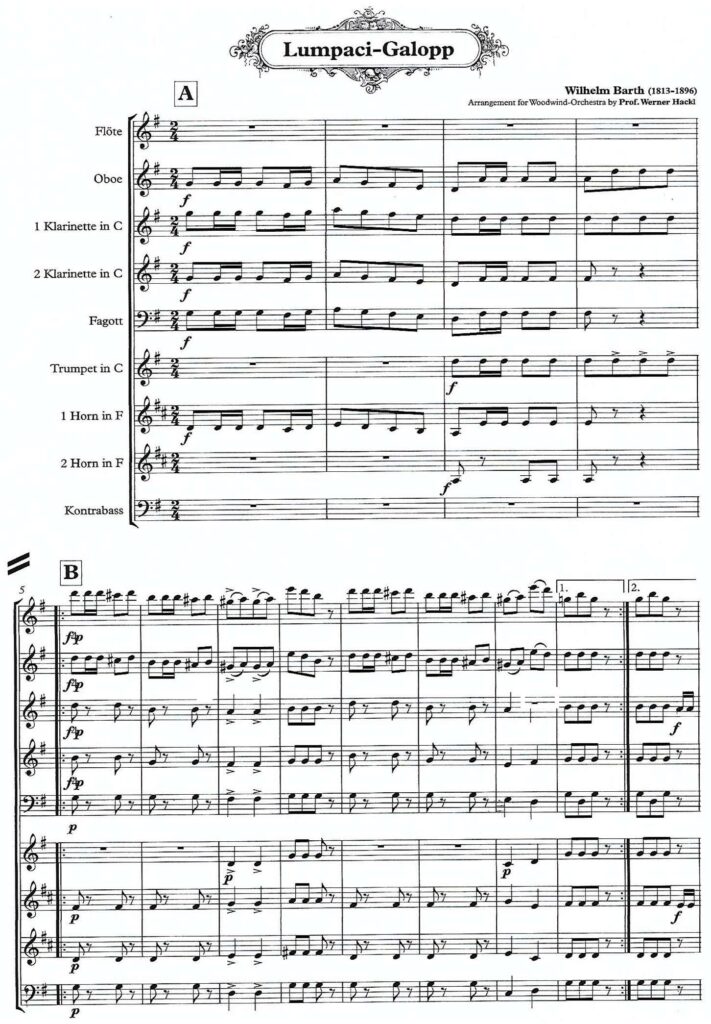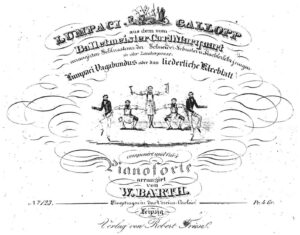Wilhelm Barth (1813-1896), Lumpaci-Galopp

„aus dem vom Balletmeister Carl Marquart arrangirten Schlusstanz der Schneider, Schuster u. Tischlerjungen in der Zauberposse Lumpaci Vagabundus oder das liederliche Kleeblatt“
„Der böse Geist Lumpacivagabundus“ oder „Das liederliche Kleeblatt“, ist eine von Johann Nestroy verfasste Zauberposse des Alt-Wiener-Volkstheaters. Sie wurde am 11. April 1833 in Wien uraufgeführt und 1835 gedruckt. Nestroy fügte in seine Possen häufig Gesänge, wie Couplets und Quodlibets (lat.‚wie es beliebt‘) ein; als Beispiel sei das Kometenlied aus Lumpacivagabundus erwähnt.

Barth W. Lumpaci-Gallopp “from the final dance of the tailors, shoemakers and carpenter boys arranged by the ballet master Carl Marquart in the magic posse Lumpaci Vagabundus or the dissolute shamrock”
“The evil spirit Lumpacivagabundus” or “The liederliche Kleeblatt” is a magical farce written by Johann Nestroy of the Alt-Wiener-Volkstheater. It was premiered in Vienna on April 11, 1833 and printed in 1835. Nestroy often added chants to his antics, such as couplets and quodlibets (Latin for ‘as it is popular’); the comet song from Lumpacivagabundus should be mentioned as an example.
| sound sample / Tonbeispiel | score/parts PDF download: € 38,- | add to cart / in den Warenkorb |
